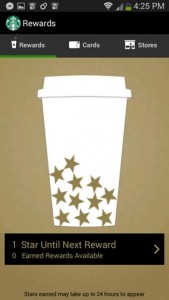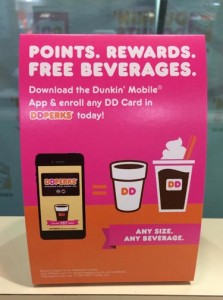
I read an interesting article recently about Starbucks’ new approach to their rewards system. They’ve decided to reward customers with free coffee based not on the number of times a customer visits a store, but by the amount of money they spend.
Currently, Starbucks rewards its customers based on how often they visit. Every transaction earns a star, and 12 stars award a customer a free drink. Starbucks announced that will change in April “to reflect the #1 request we heard from members: more stars awarded based on what you buy, no matter how often you visit.”
Indeed, Starbucks customers will soon get a lot more stars: two for every dollar they spend. But instead of 12 stars for a free drink, they will need 125. This is probably not what customers meant when they asked for “more stars.”

The change is similar to recent revisions to airline reward programs. In 2015, United Airlines and Delta Air Lines started giving out reward points based on customer fares. This change means that the frequent flier “mile” is no longer directly related to distance traveled, and that high-spending corporate travelers get a lot more rewards than bargain hunters. American Airlines will make a similar change in July.
I bring this up not to judge whether Starbucks or Delta will gain or lose customers—but rather to ask you whether you are offering customers incentives to return to your store.
The instant incentive of the film days is long gone. To state the obvious, dropping off a roll of film for processing meant an instant return back to the store, either the same day or days later, to pick up the prints. This always resulted in at least two opportunities to engage the customer.
With the advent of online printing, and digital printing at home, the first and last time you might ever see a customer could very well be their visit to buy a camera. Without an incentive, they may come back every so often, or maybe never.
Retailers should think about the cost of acquisition of a new customer. According to the Chartered Institute of Marketing: “Statistically speaking, the cost of acquiring a new customer costs five to ten times more than retaining an existing one. Not only that, but repeat customers spend, on average, 67% more.”
Brand loyalty has a lot to do with it. And the amount of time and money it takes to draw a person into your store, as opposed to incentivizing them to visit, can make a big difference to your bottom line.
Personal case in point: I’m a loyal Dunkin Donuts fan and have downloaded their DD Perks app to my iPhone. Their app presents an easy way to pay for my daily cup of coffee (milk, no sugar, for those who care about these things). Plus every time I pay with the app, my visit is recorded and I’m awarded points toward a free drink. My free drinks come with alarming regularity.

What does this app do for me? First of all, it practically begs me to stay away from Starbucks, their chief competitor in my neighborhood.
It makes me feel good about each purchase, because I know I’m working toward something that I will achieve relatively quickly (which may be Starbucks new faux pas). And it keeps me engaged with the brand. I receive offers and incentives all the time: “Come in three times this week and receive an extra 150 points.” “This week get a Dunkaccino for .99¢.”
Do You Have a Mobile Strategy?
Is coffee much different than a camera store? Well, in some cases the difference is enormous, but the principle is the same. At its heart, you want people returning to your store as often as possible for a number of reasons. In-store customer visits establish a relationship with you, your salespeople, your photofinishers and most important, your brand. Customers may come in for the incentive, but odds are they’ll walk out with something they hadn’t planned to buy. You can begin a two-way conversation that doesn’t have to end once they leave the store.
Mobile technology has made it easier for retailers to create incentive programs, and it’s not as expensive as you might think. While some of us still think of smartphones as the “evil empire” that has stolen our business, they can also be a profitable gateway to your customer.
Think about what might bring people back into your store. Of course, there are so many simple retail offers that have been around forever. These include free prints, custom framing, free classes, sales on accessories. But what can you offer in your store that would bring them back every week? Or every month? What would make them buy the next thing they don’t even realize they need?
I don’t pretend to have the answers, but I’m sure you do! In any case, if you don’t have a mobile strategy, you should start developing one now. Your customer base is waiting for you to make it easier for them to come back into your store. It happens to be right in their pocket.

Start with Mobile Payments
You can start with mobile payments. ApplePay and Google Wallet are becoming more and more ubiquitous in the mobile world. It not only makes it easier for the customer, but it says something about your store. We’re in the technology business, and you should be signaling to your customers that you’re part of it.
Any mobile strategy in the retail world should be built around engaging your customer, continuing a two-way conversation with them (especially when they’re not in your store), and finding the right incentive that drives them back into your store on a regular basis.
If you’d like to talk more about mobile, feel free to e-mail me at jgrossman@photoreporter.com.





